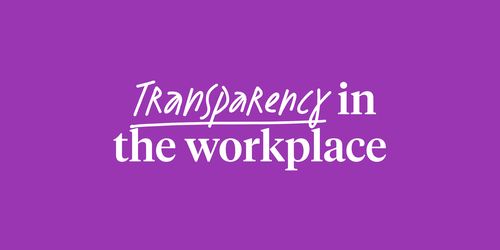
Article

Every organization relies on its people to achieve success. A great team can accomplish amazing things, but without clear goals, regular feedback, and a structured approach to growth, even the most talented teams can fall short of their potential. That’s where employee performance management comes in.
Performance management is about more than annual reviews – it’s a dynamic, ongoing process that aligns individual contributions with broader organizational objectives. It creates a framework for continuous improvement that drives employee engagement and organizational success.
In this blog post, we’ll explore why performance management is important when building successful teams and how it helps businesses foster accountability, recognize top talent, and drive sustainable growth. Whether you’re a people leader hoping to improve your team’s performance or an HR professional looking to refine your business’ processes, understanding the value of performance management can help you achieve these goals.
Before diving into why performance management is important, let’s first define what it is. Performance management is an ongoing dialogue between managers and their direct reports to align on responsibilities, set clear goals, and strategically advance company priorities.
At its core, performance management is a continuous process that encompasses activities like:
When executed together, these cornerstones of performance management allow managers to unlock their team’s full potential, driving both individual and organizational success.
Looking to learn more about performance management and the factors that can help your employees thrive? Check out our Complete guide to understanding performance management for actionable insights and strategies to drive success.
Five key stages make up the performance management cycle: planning, monitoring, developing, reviewing and rating, and rewarding. In this section, we’ll take a closer look at each phase and what it entails:
The employee performance management cycle begins with setting clear, actionable goals aligned with larger organizational objectives. Managers and employees can leverage frameworks like SMART goals or objectives and key results (OKRs) to define what success looks like and outline the steps needed to achieve it. The planning stage is essential for driving organizational alignment, ensuring everyone understands how performance will be evaluated during the performance appraisal.
It’s equally important to address employee development during this stage. Managers can collaborate with employees to create an individual development plan (IDP) that identifies growth opportunities and establishes a roadmap for achieving them. Having both performance and development goals helps employees focus on immediate priorities while also working toward building new skills, advancing their careers, and feeling a deeper sense of purpose in their roles.
The monitoring phase centers on regular check-ins (or 1-on-1 meetings) between managers and employees to track goal progress and make any necessary adjustments. When progress lags, these conversations provide an opportunity to identify roadblocks, address challenges, and brainstorm solutions to get back on track. Conversely, when employees consistently surpass expectations, managers can adjust goals to make them more ambitious. This approach ensures employees remain challenged, engaged, and aligned with evolving organizational priorities.
During the development stage, managers play a crucial role in helping employees reach their full potential. This involves addressing performance gaps through targeted coaching and providing constructive employee feedback to support growth. Whether it’s guiding underperforming individuals back on track or refining the skills of high performers, managers are encouraged to focus on continuous improvement to empower individuals to achieve their short- and long-term goals.
The formal review process involves managers gathering 360-degree feedback from peers and employees to provide a comprehensive evaluation of individual performance throughout the review period. This approach introduces more diverse perspectives than just a manager, allowing for more accurate and fair assessments. Employee ratings not only give individuals a clear understanding of their overall performance but also help your organization make informed and equitable decisions regarding promotions, compensation adjustments, and career development opportunities, ensuring fairness and alignment with performance outcomes.
Including calibration meetings in this phase can improve the fairness of performance appraisals by enabling people leaders to discuss and align on performance ratings across teams, ensuring consistency throughout the organization. Calibrating ratings can help mitigate bias, standardize evaluations, and ensure the fair distribution of recognition, rewards, and employee development opportunities.
The final stage of the employee performance management cycle focuses on reinforcing strong performance through recognition and rewards. Consistently acknowledging and rewarding top performers boosts retention while keeping employees engaged and motivated. The right type of rewards will depend on your organization, but common options include raises, promotions, equity, bonuses, additional vacation days, or other meaningful incentives. Clear and tangible rewards inspire employees to do their best, achieve their goals, and even surpass expectations.

Your guide to implementing a new performance management system
Implementing and maintaining a formal performance management cycle is a significant investment for your organization, managers, and employees. However, the long-term benefits – which we’ll explore below – can make it well worth your business’ while.
Unclear and ineffective goals waste your organization’s resources and time. By implementing a performance management process with SMART goals and OKRs, you can ensure that every objective – whether at the department, team, or individual level – is strategically aligned to drive organizational success. This approach maximizes the impact of your employees’ efforts, creating a more focused and efficient workforce.
Performance management plays a pivotal role in boosting employee engagement by fostering clarity, communication, development, and recognition. Here are some statistics that demonstrate its value:
Every stage of the performance management cycle helps drive employee engagement, ensuring your workforce feels supported and motivated as they pursue success.
Effective communication is the foundation for employee performance management and all of its associated benefits. When managers and employees engage in regular, meaningful conversations, they improve alignment, encourage strategic thinking, and enhance their ability to adapt to shifting business priorities. This creates an agile and resilient workplace, ultimately leading to stronger business outcomes.
Take employee feedback as an example. Real-time feedback empowers teams to make swift adjustments, enabling your organization to respond proactively to challenges and opportunities. Research shows that real-time feedback is something employees want – they are 3.6 times more likely to strongly agree that they are motivated to do outstanding work when their manager provides daily feedback. By fostering open dialogue and continuous employee feedback, performance management drives workplace agility, productivity, and success.
Offering opportunities for growth and development demonstrates your organization’s commitment to its people. When employees feel valued and can picture a future with your company, they are more motivated to stay and grow alongside your business. Individual development plans, professional goals, and feedback give employees the growth blueprint they need to grow personally and professionally within your company.
Clear, actionable goals provide employees with a precise understanding of performance standards, what success entails, and how their contributions align with broader organizational objectives. This enhances individual accountability and, at the same time, promotes transparency across the company. When goals and progress are visible to everyone, employees feel connected to a larger purpose – and more focused, confident, and motivated in their roles.
Consistent 1-on-1 meetings help employees feel supported and heard. This open communication builds trust between managers and employees, fostering a culture of transparency, collaboration, and mutual respect. When managers build closer, more trusting relationships with their direct reports, employees are more likely to share concerns, seek guidance, and actively contribute to problem-solving, ultimately creating a more engaged and resilient workforce.
Acknowledging and celebrating achievements is vital for keeping employees engaged and motivated. Recognition serves as positive reinforcement, inspiring employees to maintain high performance and strive for further success. Whether it’s through verbal praise, public acknowledgment, or monetary rewards, recognizing top talent reinforces their value to the organization. It also strengthens employees' connection to your company by fostering a sense of appreciation and belonging, ultimately boosting morale and retention.

Learn how to adapt to external factors and maintain momentum toward business goals and impact.
Creating an effective performance management strategy requires avoiding common pitfalls. From poorly defined goals to inconsistent feedback, here are seven performance management mistakes to watch out for.
What does great performance management look like in action? Read our customer story to learn how MLB hit a home run with a culture of continuous performance following these best practices.
Now that you understand the importance of performance management, consider this: only 2 in 10 employees say their performance is managed in a way that motivates them to do outstanding work. In order to be one of the businesses that gets performance appraisals right, consider partnering with an employee experience platform like Culture Amp.
Culture Amp’s robust suite of tools has everything you need to set meaningful goals, streamline 1-on-1s and performance conversations, simplify giving and receiving feedback, develop top talent, and celebrate employees’ wins. If you’re ready to unlock high performance for your teams and business, request a free performance demo of Culture Amp today.